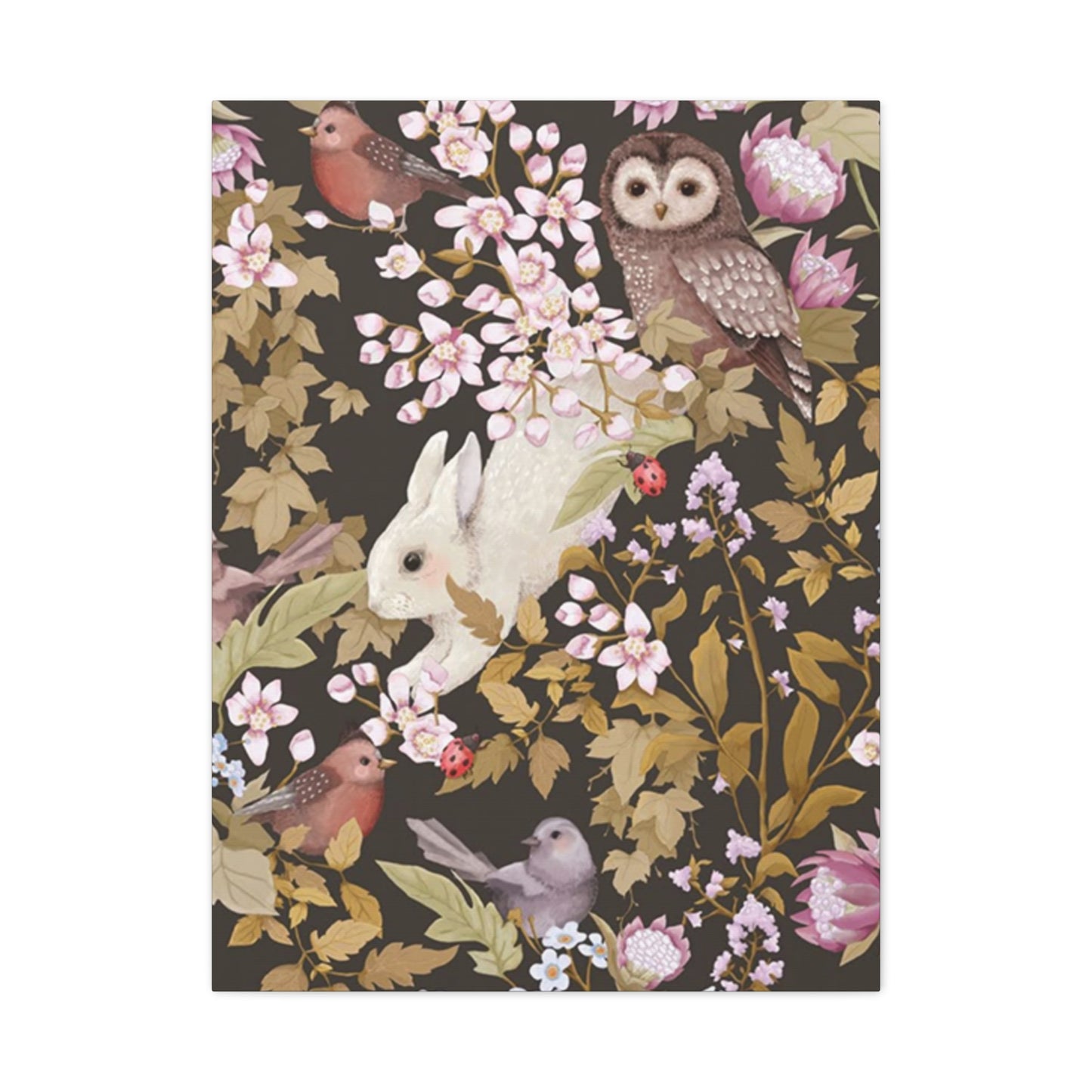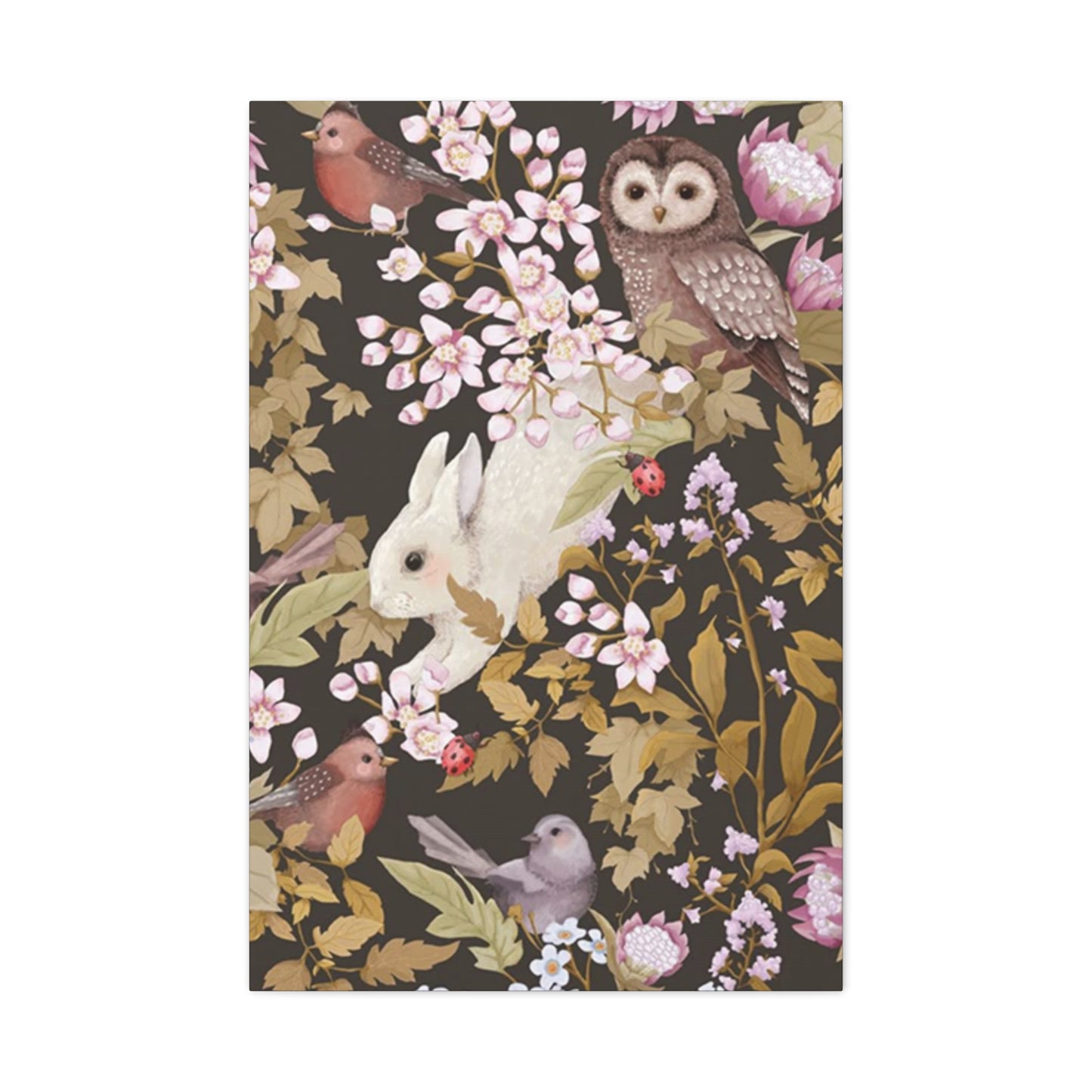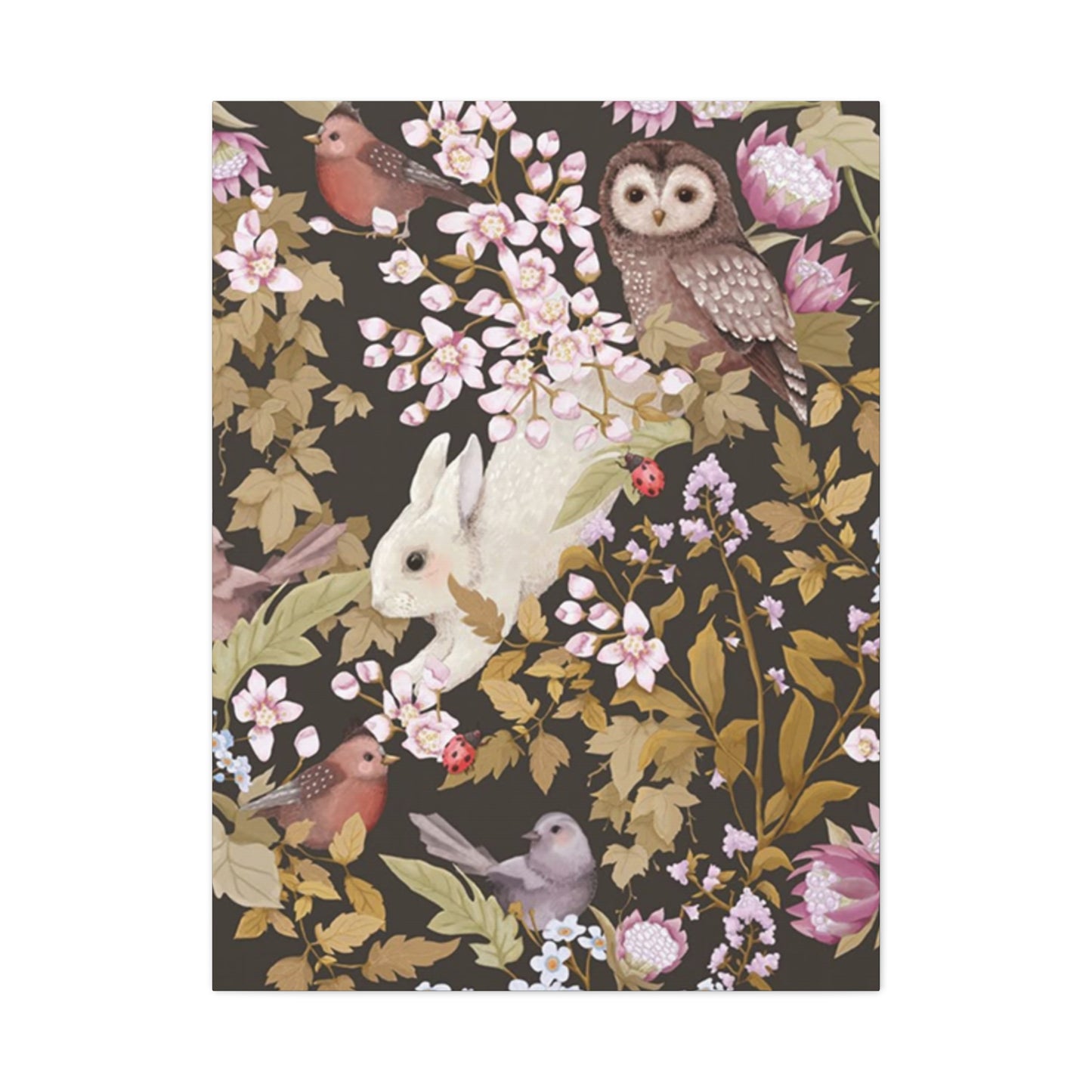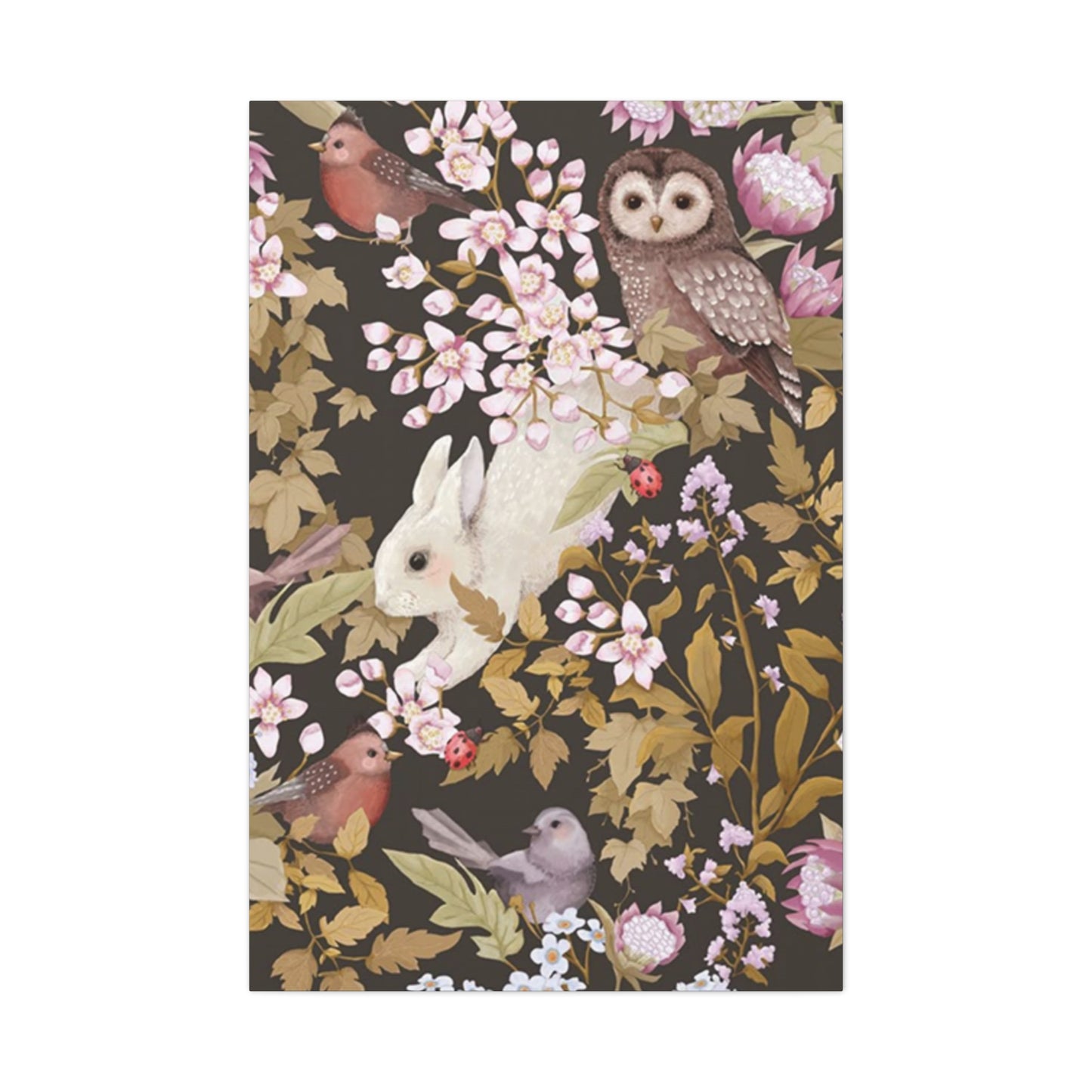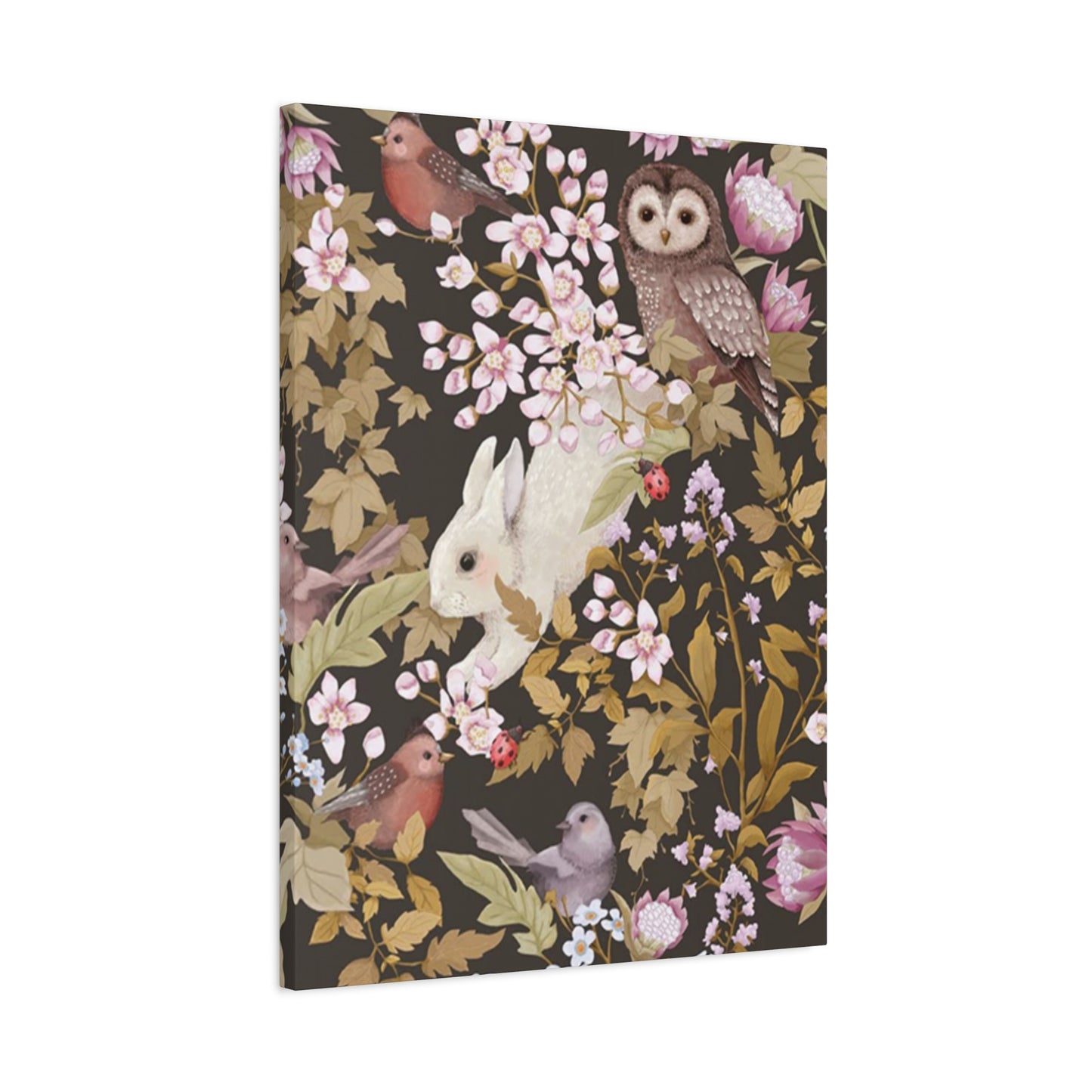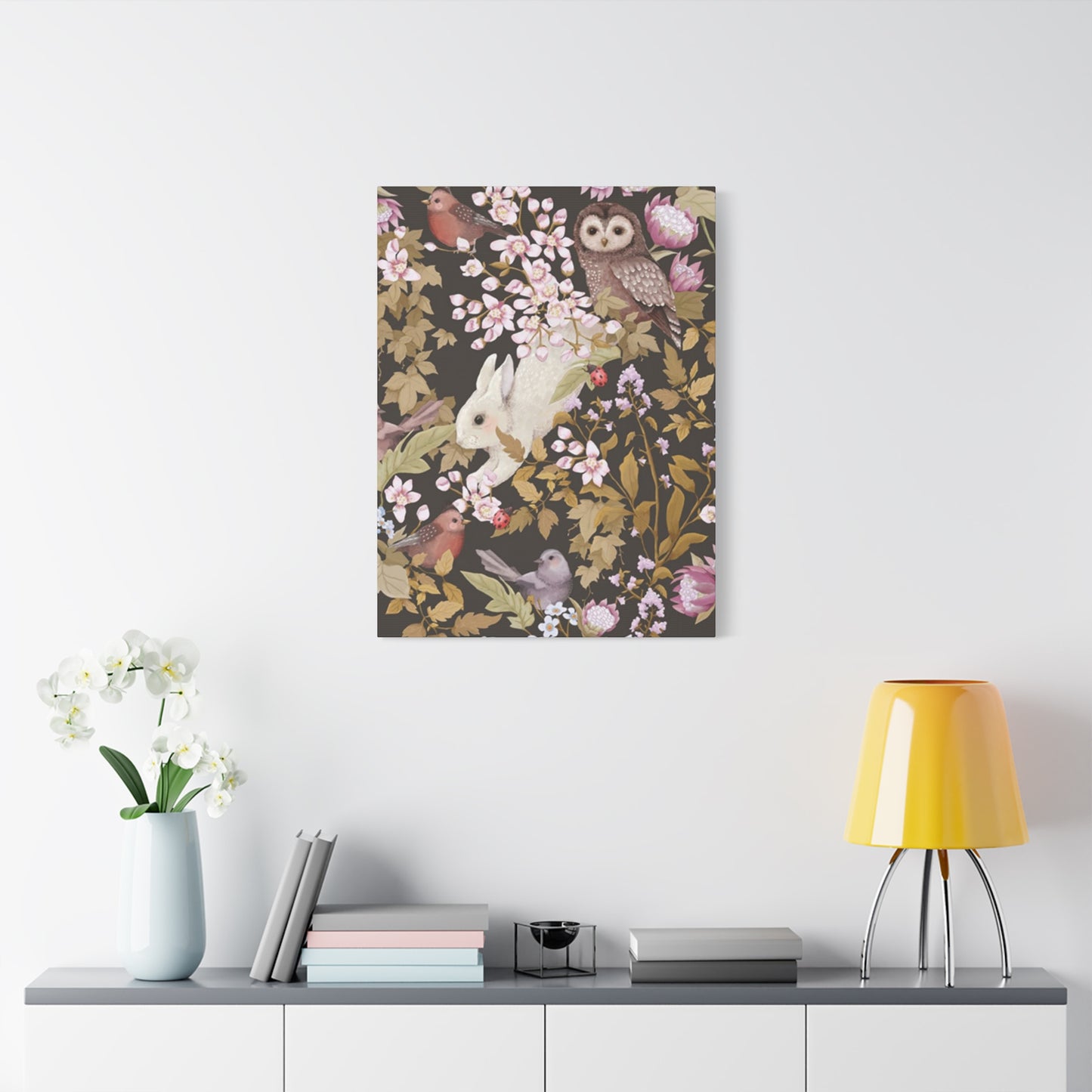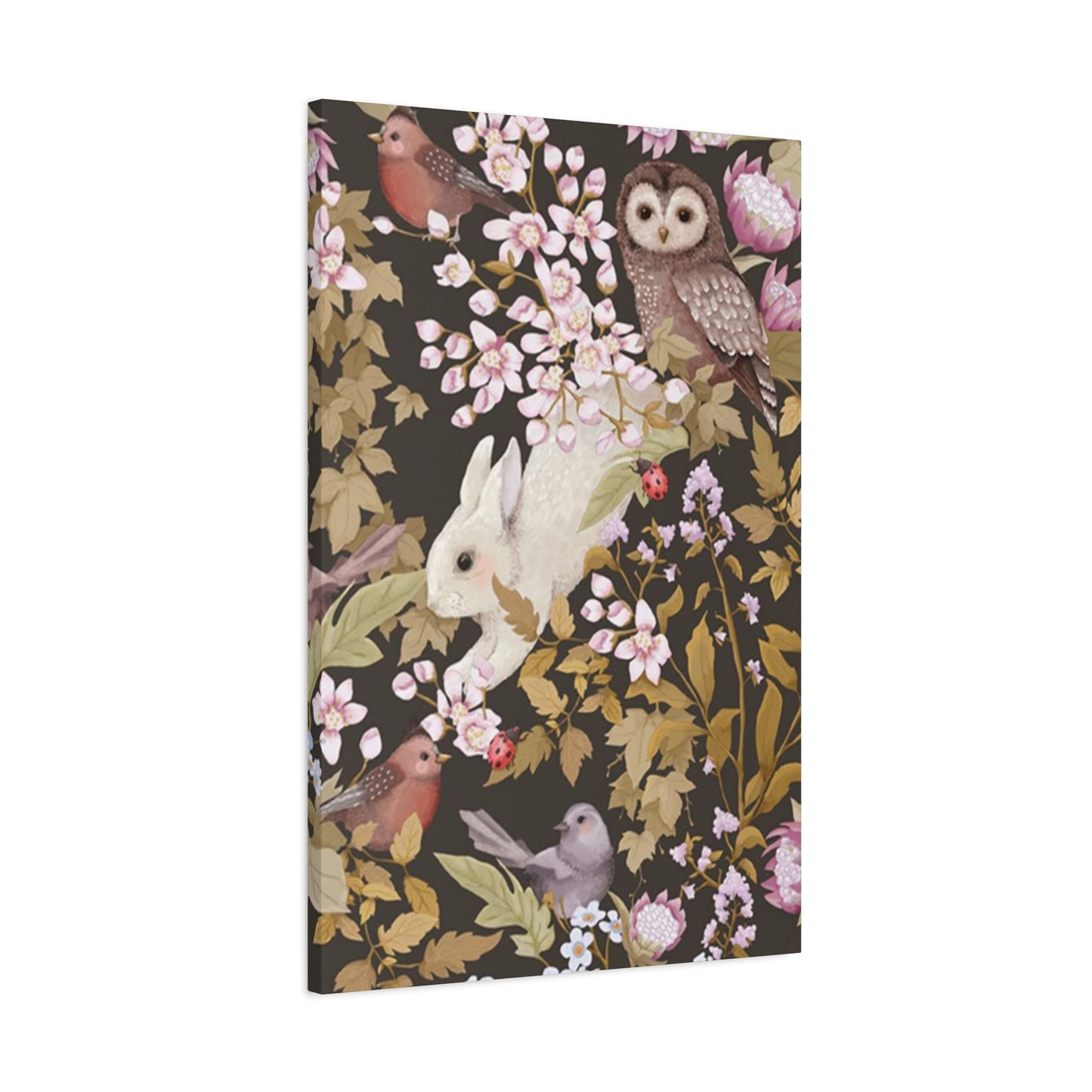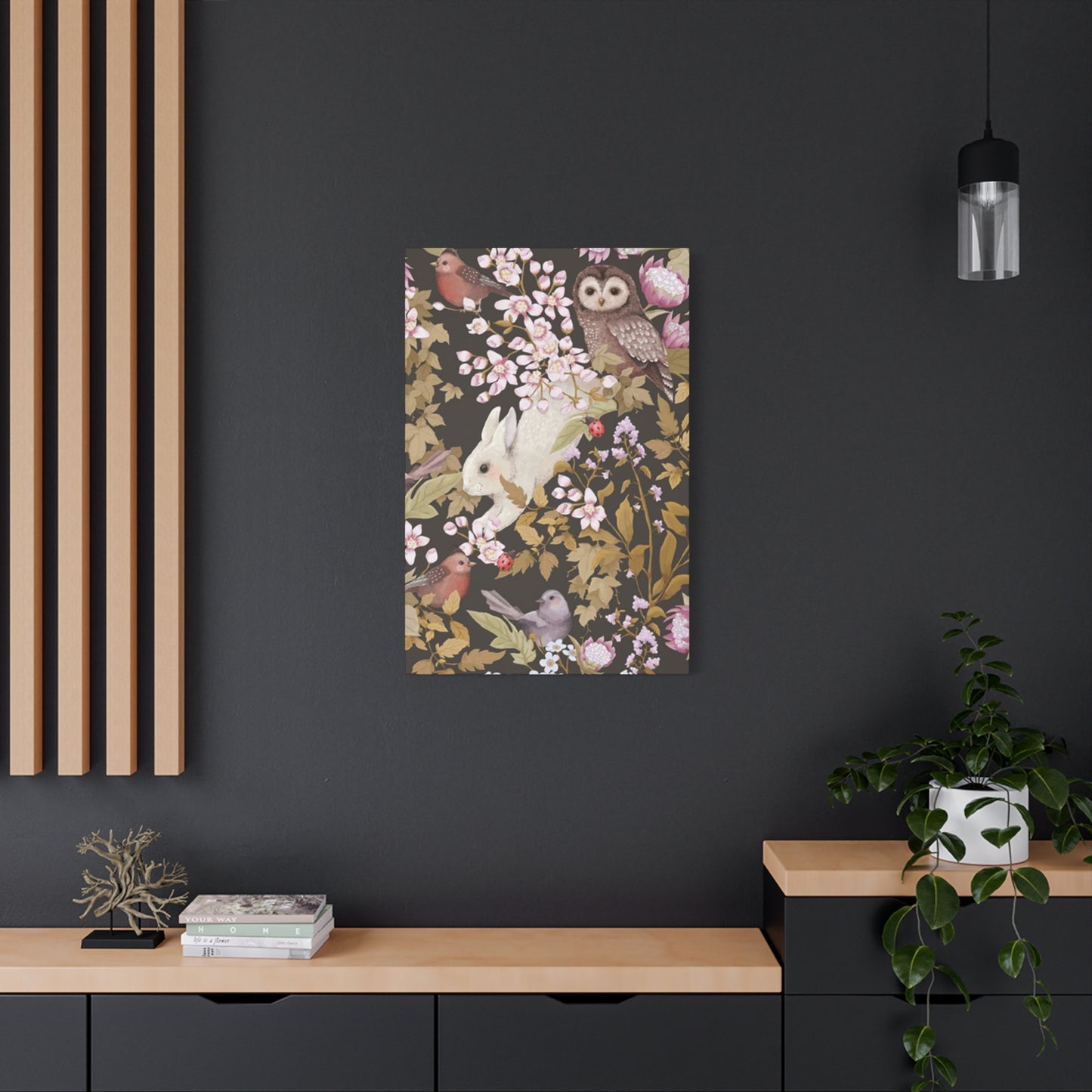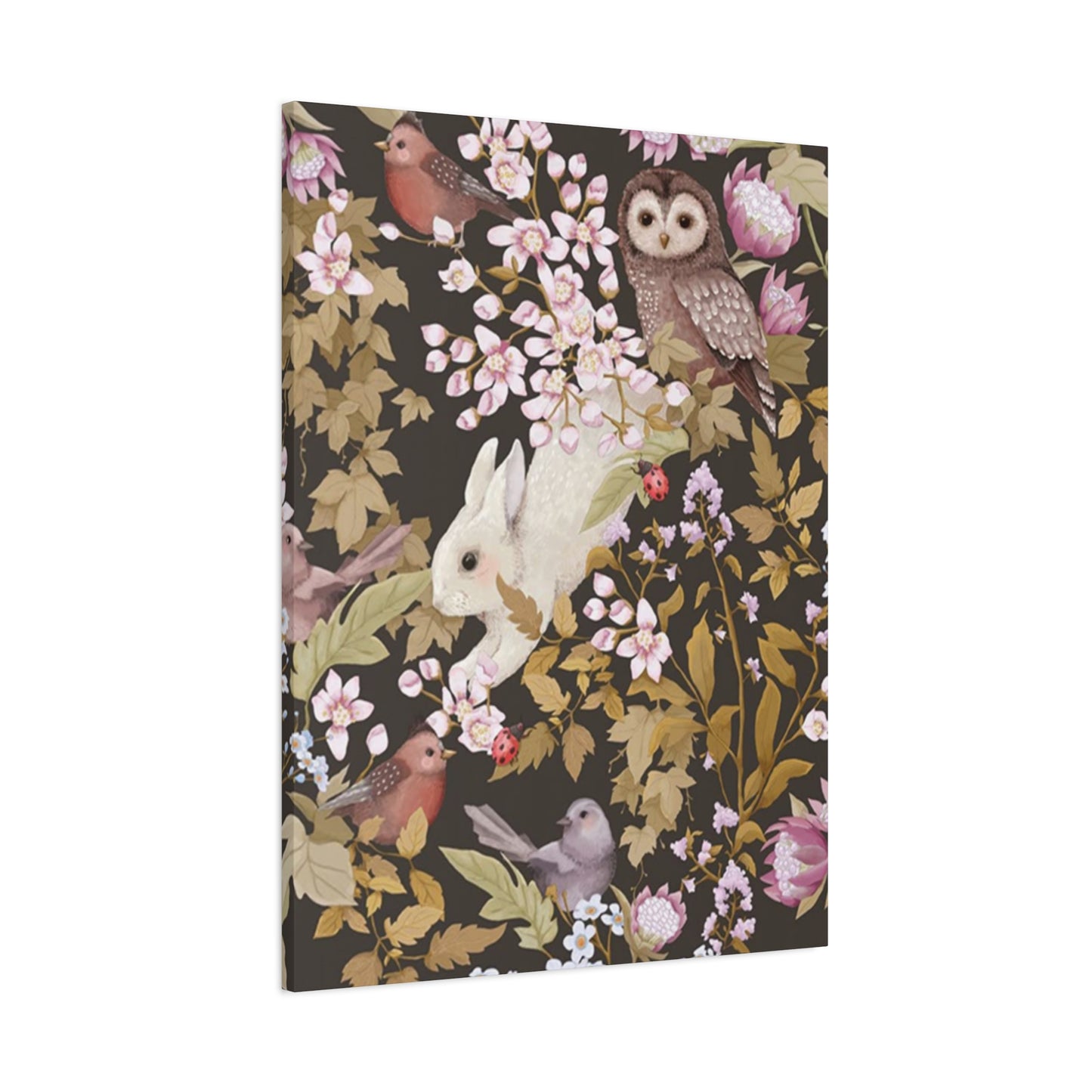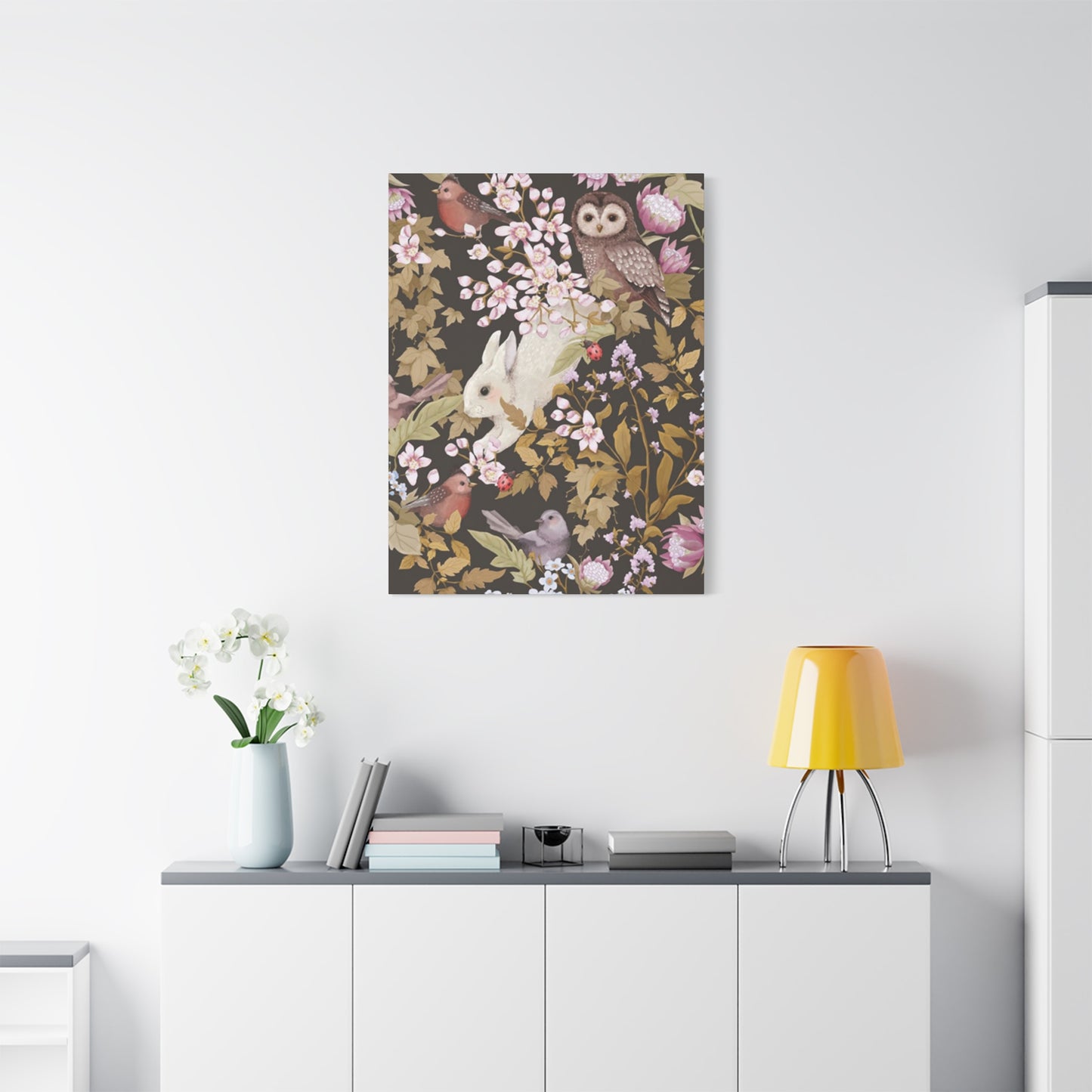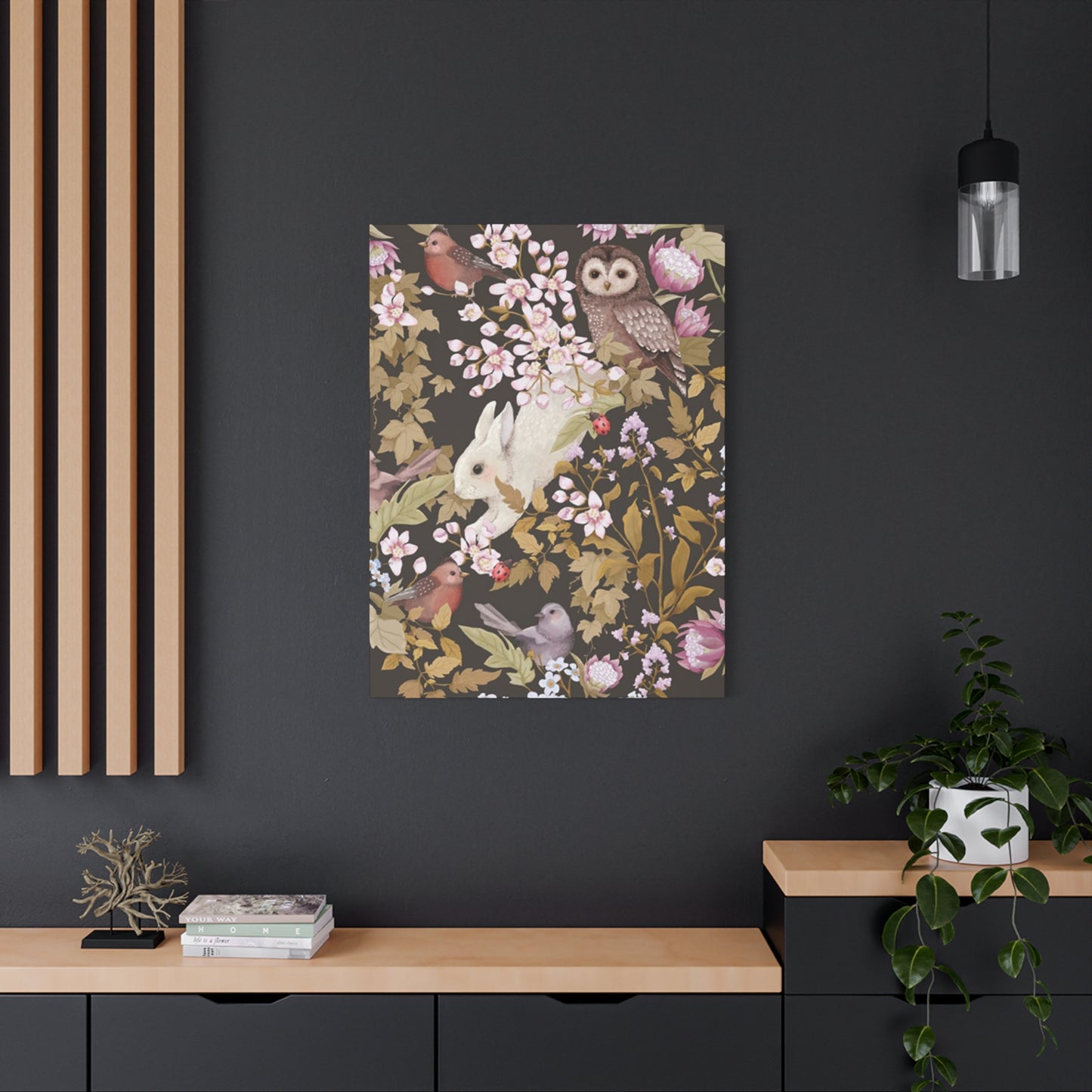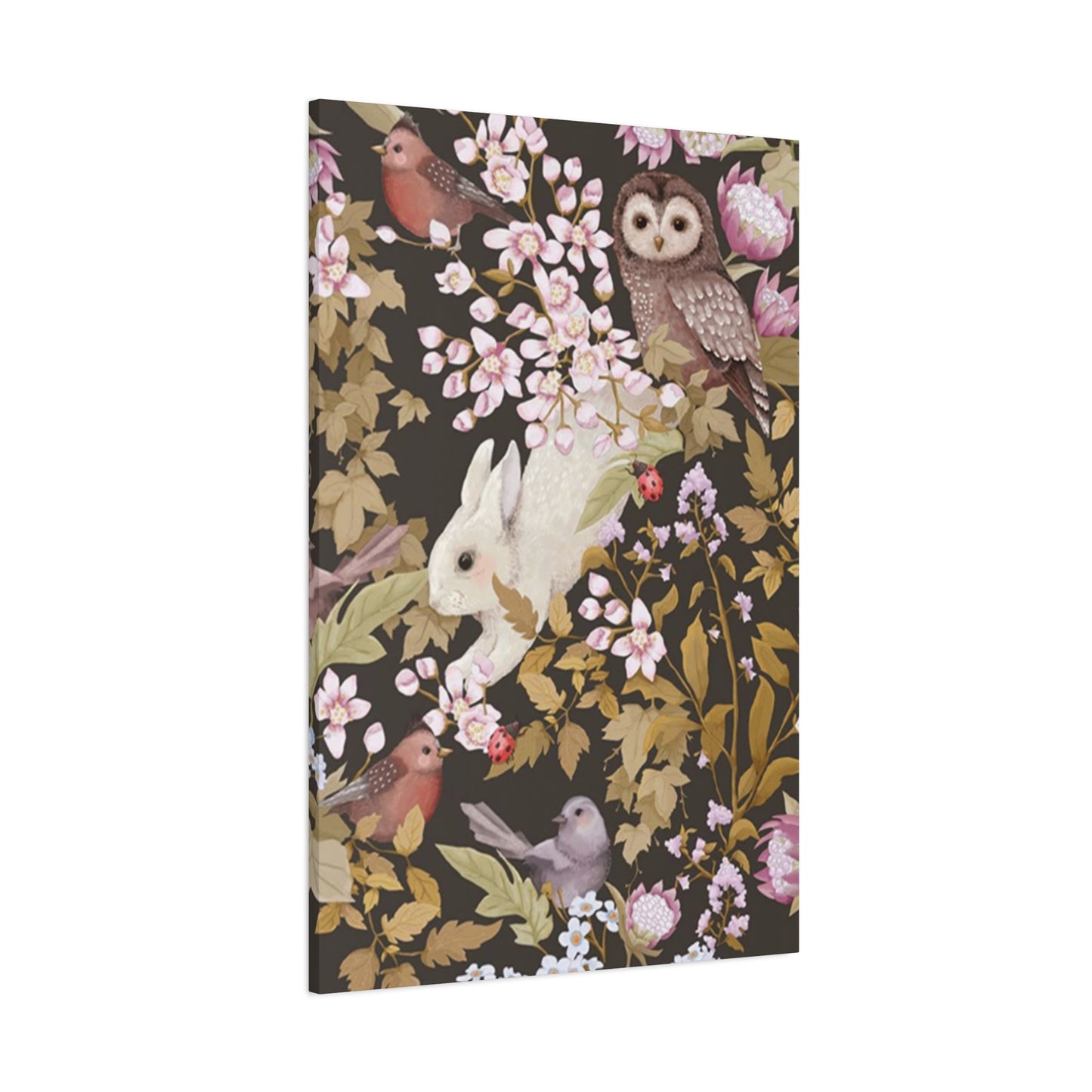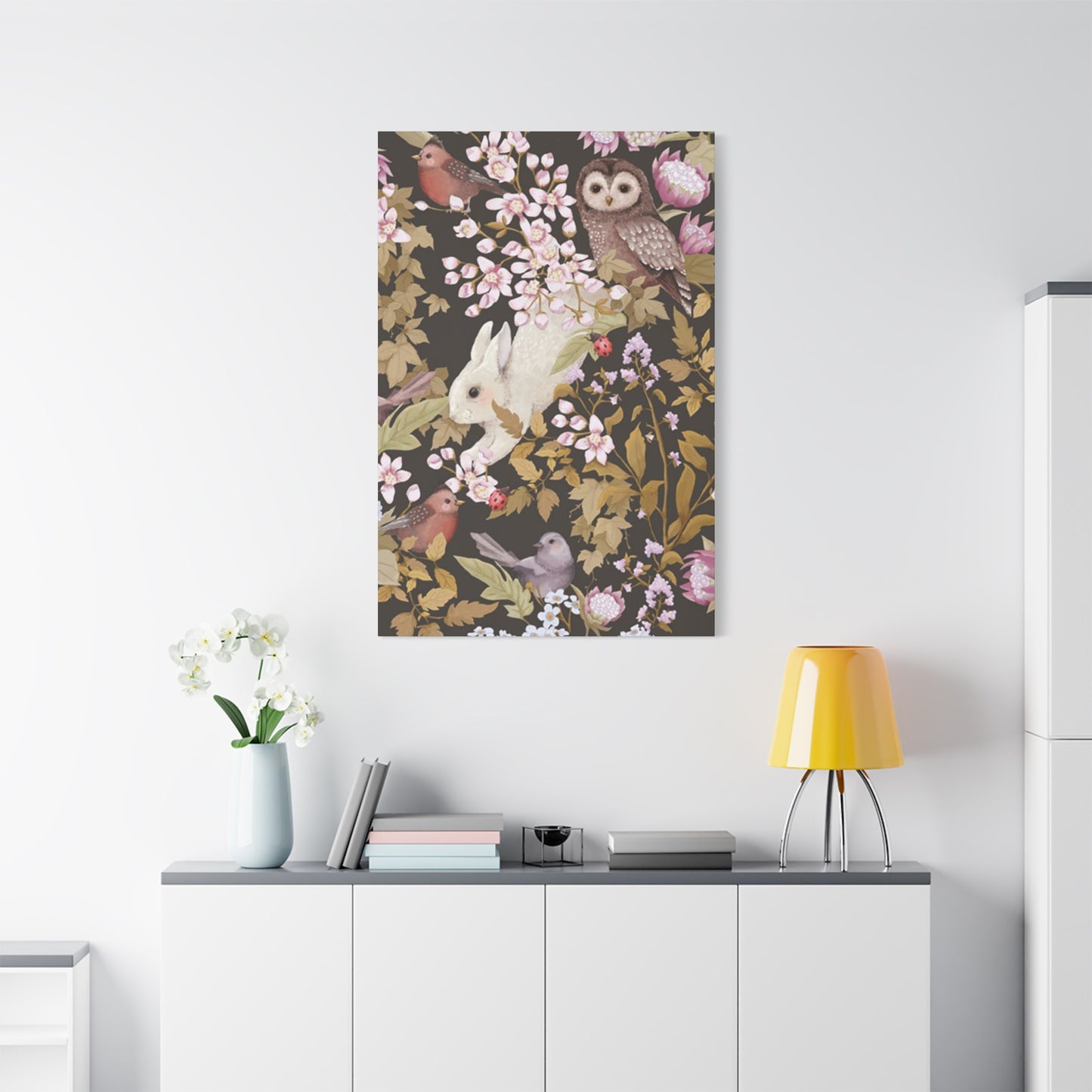Decorate with Charm: Creating Enchanting Spaces Using Rabbit and Bird Wall Art
The allure of wildlife-inspired interior design has captured the hearts of homeowners and decorators worldwide, offering a refreshing connection to the natural world within our living spaces. Among the most captivating themes in this realm is the delightful combination of rabbits and birds in wall art, creating a harmonious blend that speaks to our innate desire for tranquility and beauty. This enchanting pairing brings together the gentle earth-dwelling rabbit with the free-spirited avian creatures, resulting in compositions that resonate with both whimsy and sophistication. Whether you are drawn to the peaceful coexistence of these animals in their natural habitat or appreciate the symbolic meaning they carry across various cultures, incorporating rabbit and bird artwork into your home offers endless possibilities for creative expression.
The growing popularity of wildlife-themed decor reflects a broader movement toward biophilic design, which emphasizes the human need to connect with nature even in urban environments. As our lives become increasingly digital and fast-paced, many people find solace in bringing elements of the natural world into their homes. Rabbit and bird imagery serves as a gentle reminder of the beauty that exists beyond our walls, creating spaces that feel both grounding and inspiring. This type of artwork transcends passing trends, offering timeless appeal that can adapt to various decorating styles while maintaining its intrinsic charm.
When selecting rabbit and bird wall art for your space, you enter a world rich with artistic interpretations and stylistic approaches. From realistic wildlife portraits that capture every detail of fur and feather to abstract representations that evoke the essence of these creatures through color and form, the options are virtually limitless. Vintage botanical prints featuring rabbits among flowering branches with perched songbirds bring a classical elegance to any room, while modern minimalist designs offer clean lines and simplified forms that appeal to contemporary sensibilities. Watercolor paintings create soft, dreamy atmospheres perfect for bedrooms and nurseries, while bold acrylic pieces can serve as striking focal points in living areas.
The versatility of rabbit and bird motifs allows them to complement a wide range of interior design styles. In farmhouse and cottage-style homes, these pieces enhance the rustic charm and connection to rural life. Scandinavian interiors benefit from the natural themes and often neutral color palettes associated with wildlife art. Even in more formal traditional settings, carefully chosen rabbit and bird artwork can add a touch of nature without compromising sophistication. The key lies in understanding how to select pieces that harmonize with your existing decor while adding that special element of natural beauty that makes a house feel like a home.
Beyond their aesthetic appeal, rabbits and birds carry rich symbolic meanings across cultures. Rabbits often represent fertility, abundance, gentleness, and new beginnings, while birds symbolize freedom, perspective, communication, and the connection between earth and sky. Together, they create a balanced representation of groundedness and aspiration, the material and the spiritual. This deeper significance adds layers of meaning to your decor choices, allowing your wall art to become more than just decoration but rather a reflection of your values and aspirations.
As you embark on the journey of incorporating rabbit and bird wall art into your home, consider the various rooms where these pieces can make an impact. The entryway welcomes guests with a preview of your personal style, making it an ideal location for a charming rabbit and bird print that sets a warm, inviting tone. Living rooms offer larger walls perfect for statement pieces or gallery arrangements that can become conversation starters. Bedrooms benefit from the calming presence of nature-inspired art, creating serene environments conducive to rest and relaxation. Even functional spaces like home offices can be transformed into more pleasant environments with the addition of wildlife artwork that provides visual breaks during the workday.
The process of styling rabbit and bird wall art involves more than simply hanging a piece on an empty wall. Thoughtful placement, appropriate framing, complementary color schemes, and strategic lighting all contribute to maximizing the impact of your chosen artwork. Understanding the principles of visual balance, scale, and composition helps ensure that your wildlife art integrates seamlessly into your overall design scheme rather than appearing as an afterthought. Additionally, considering how your artwork interacts with other decorative elements such as furniture, textiles, and accessories creates a cohesive look that feels intentional and polished.
For those seeking to make environmentally conscious decorating choices, wildlife art offers an opportunity to support artists who prioritize sustainable practices and materials. Many contemporary artists create rabbit and bird pieces using eco-friendly paints, recycled canvases, and sustainably sourced wood for frames. Some even donate portions of their proceeds to wildlife conservation efforts, allowing you to decorate your home while contributing to the protection of the very creatures that inspire your decor. This alignment of aesthetic preferences with ethical values adds another dimension of satisfaction to your decorating choices.
The accessibility of rabbit and bird wall art spans a wide range of price points, making this decorating option available to various budgets. Affordable prints and posters allow renters and budget-conscious decorators to enjoy wildlife themes without significant investment, while original paintings and limited edition pieces serve as valuable additions to art collections. The rise of independent artists selling through online platforms has democratized access to unique, high-quality wildlife art, often at more reasonable prices than traditional gallery purchases. This accessibility means that anyone can bring the charm of rabbits and birds into their home, regardless of financial constraints.
Rabbit and Birds Wall Art for Nature Lovers
The profound connection between humans and the natural world manifests beautifully in our choice of home decor, and for those who identify as nature lovers, rabbit and bird wall art represents more than mere decoration. It serves as a daily reminder of the beauty and wonder that exists in the world beyond our walls, bringing the serenity of natural habitats into our personal spaces. Nature enthusiasts understand that surrounding themselves with imagery of wildlife creates an environment that nurtures their spirit and reinforces their values regarding environmental stewardship and appreciation for all living creatures.
For individuals who spend their leisure time hiking through forests, birdwatching in meadows, or simply enjoying the wildlife in their own backyards, having visual representations of rabbits and birds indoors creates a sense of continuity between outdoor experiences and indoor living. These art pieces become windows into the natural world, offering moments of reflection and connection even during busy days when outdoor excursions are not possible. The presence of wildlife art can actually enhance mindfulness and reduce stress, as viewing nature imagery has been scientifically shown to lower cortisol levels and promote feelings of calm and well-being.
Nature lovers often seek authenticity in their wildlife art, preferring pieces that accurately depict the animals in their natural behaviors and habitats. Artwork showing a cottontail rabbit alert in a meadow with songbirds nearby captures a genuine moment that resonates with anyone who has witnessed similar scenes in nature. The attention to detail in such pieces, from the texture of the rabbit's fur to the specific markings of bird species, demonstrates respect for the subjects and appeals to those with knowledge of wildlife. This authenticity transforms wall art from generic decoration into something meaningful that reflects the viewer's understanding and appreciation of the natural world.
The educational aspect of rabbit and bird wall art should not be overlooked, especially for nature lovers who enjoy learning about different species and their behaviors. Art pieces that feature specific rabbit breeds or identifiable bird species can spark curiosity and conversation, encouraging family members and guests to learn more about these creatures. For households with children, such artwork provides ongoing opportunities to discuss wildlife, habitats, ecosystems, and conservation, making education a natural part of the home environment. This transforms the living space into an informal learning environment where appreciation for nature is cultivated through daily exposure to thoughtfully chosen imagery.
Selecting rabbit and bird wall art that reflects seasonal changes in nature adds another dimension for nature lovers. Artwork depicting rabbits in spring meadows with nesting birds celebrates renewal and growth, while autumn scenes with rabbits among falling leaves and migrating birds acknowledge the cycles of nature. Winter representations showing rabbits in snowy landscapes with hardy birds that remain through cold months highlight resilience and adaptation. Having different pieces for different seasons or choosing artwork that captures a particularly beloved season allows nature enthusiasts to keep their connection to the natural calendar strong throughout the year.
The composition and setting within rabbit and bird artwork matters greatly to discerning nature lovers. Pieces that show these animals within accurate habitat contexts, surrounded by appropriate vegetation and landscape features, demonstrate the artist's understanding of ecology and natural relationships. A rabbit positioned among wildflowers with native songbirds creates a scene that feels truthful and respectful of nature, while generic or fantastical settings might feel less authentic. This attention to environmental accuracy enhances the artwork's value for those who truly understand and cherish the natural world.
Nature lovers often extend their environmental values to their purchasing decisions, seeking rabbit and bird wall art from artists who share their commitment to conservation. Many wildlife artists donate portions of their sales to habitat preservation organizations, wildlife rehabilitation centers, or species-specific conservation programs. Some create their work using environmentally sustainable materials and processes, minimizing the ecological footprint of art production. For nature enthusiasts, supporting such artists creates alignment between decorating choices and environmental ethics, making the artwork even more meaningful as it represents both aesthetic appreciation and active contribution to wildlife protection.
Woodland Charm: Rabbit with Birds Canvas
The enchantment of woodland settings has captivated human imagination for centuries, representing mystery, magic, and the untamed beauty of nature. When rabbit imagery combines with birds on canvas within woodland contexts, the result is artwork that captures this timeless appeal while bringing it into contemporary homes. Woodland-themed rabbit and bird canvases offer particular charm through their ability to transport viewers into forest scenes where dappled sunlight filters through leaves, moss covers fallen logs, and wildlife goes about its quiet business undisturbed by human presence.
Canvas as a medium brings specific advantages to woodland rabbit and bird artwork. The texture of canvas adds depth and dimension that paper prints cannot match, with the weave of the fabric contributing subtle visual interest that enhances the organic nature of woodland scenes. High-quality canvas prints can faithfully reproduce the brushstrokes and techniques of original paintings, giving affordable reproductions an authentic artistic quality. Additionally, canvas naturally evokes a sense of permanence and substance that elevates the perceived value of the artwork, making even modestly priced pieces feel like significant decor investments.
Woodland charm in rabbit and bird canvas art often incorporates specific design elements that define this aesthetic. Imagery of forest floors covered with ferns, wildflowers, and fallen leaves creates rich, textured backgrounds for the featured wildlife. Tree trunks and branches frame compositions, adding vertical elements that guide the eye while reinforcing the forest setting. Mushrooms, acorns, pinecones, and other forest floor treasures add authentic details that nature lovers recognize and appreciate. The interplay of light and shadow characteristic of woodland environments creates mood and atmosphere, with shafts of sunlight highlighting the rabbit or illuminating perched birds.
The color palette of woodland-themed rabbit and bird canvases tends toward earthy, muted tones that reflect the actual colors found in forest environments. Deep greens of moss and ferns, rich browns of tree bark and soil, the grays and tans of rabbit fur, and the varied colors of woodland bird species like robins, woodpeckers, and chickadees create harmonious combinations. Often, artists incorporate subtle color variations and complex layering that mimics the visual complexity of real forest environments, giving the artwork depth and richness that rewards continued viewing. These natural color schemes integrate beautifully into most home decor styles, particularly those featuring wood elements, neutral palettes, and natural materials.
Different artistic approaches to woodland rabbit and bird canvases create distinct moods and suit different decorating purposes. Realistic wildlife paintings transport viewers directly into the forest, creating almost photographic representations of woodland scenes. Impressionistic approaches use looser brushwork and emphasis on light and color to capture the feeling of the woodland environment rather than precise details. Vintage botanical illustration styles combine scientific accuracy with artistic beauty, often featuring rabbits among detailed renderings of forest plants with birds positioned among branches. Contemporary graphic designs might simplify woodland elements into stylized shapes and patterns while maintaining the essential charm of the theme.
The size of woodland rabbit and bird canvases should be chosen with consideration for the room size and the desired impact. Large canvases make dramatic statements in spacious living rooms or above beds, creating focal points that anchor the room's decor. Medium-sized pieces work well in various locations, from dining room walls to hallway displays, offering presence without overwhelming smaller spaces. Multiple smaller canvases can be arranged in gallery groupings, creating visual interest through repetition and variation of the woodland theme. The depth of stretched canvas adds three-dimensional presence to walls, creating more visual interest than flat prints while remaining practical for most homes.
Framing options for rabbit and bird woodland canvases significantly affect their presentation and integration into home decor. Gallery-wrapped canvases with imagery extending around the edges create clean, contemporary presentations that need no additional framing, reducing cost and creating a modern aesthetic. Floating frames add elegant borders while maintaining the contemporary feel of gallery wrapping. Traditional framing in wood that echoes the forest theme reinforces the woodland connection, with rough-hewn or natural wood particularly effective. Painted frames in complementary colors can either blend with the artwork for a cohesive look or provide contrast for a more dynamic presentation.
Lighting considerations are essential for maximizing the impact of woodland rabbit and bird canvases. These pieces often feature subtle color variations and detailed textures that require proper illumination to be fully appreciated. Natural light from windows can beautifully illuminate canvas art, though care should be taken to avoid direct sunlight that might cause fading over time. Picture lights mounted above canvas pieces provide focused illumination that highlights the artwork while adding ambient lighting to the room. Track lighting or adjustable spotlights offer flexibility in directing light exactly where it best serves the art. Even in rooms with general overhead lighting, canvas texture catches light in ways that create subtle visual interest throughout the day as lighting conditions change.
Cozy Spaces with Rabbit and Bird Prints
Creating cozy living spaces ranks among the top priorities for many homeowners, particularly in our often hectic modern world where homes serve as sanctuaries from external stresses. Rabbit and bird prints excel at contributing to this sense of coziness, bringing softness, warmth, and gentle visual interest that makes spaces feel welcoming and comfortable. The inherent gentleness of rabbits and the delicate beauty of birds translate into artwork that soothes rather than stimulates, creating environments that invite relaxation and contentment.
The concept of coziness extends beyond physical comfort to encompass emotional and psychological well-being. Spaces feel cozy when they reflect personal taste, contain elements that bring joy, and create a sense of safety and belonging. Rabbit and bird prints contribute to this feeling by introducing natural elements that humans instinctively find comforting. The presence of wildlife imagery connects us to the natural world in ways that feel nurturing and grounding, activating positive associations with nature that enhance our sense of well-being. Additionally, the generally non-threatening nature of rabbits and small birds makes them particularly suitable for creating gentle, welcoming atmospheres.
Selecting rabbit and bird prints specifically for cozy spaces involves considering both subject matter and artistic style. Images of snuggling rabbits or birds nestled in nests convey warmth and security that resonates emotionally. Softer artistic approaches using watercolors, pastels, or gentle pencil drawings create visual softness that contributes to the cozy feeling. Compositions with close-up views that allow viewers to appreciate details of fur texture or feather patterns create intimacy that draws people in. The overall mood should be peaceful rather than dynamic, contemplative rather than exciting, creating visual rest points in your home.
Color choices in rabbit and bird prints significantly impact their contribution to cozy atmospheres. Warm color palettes featuring creams, soft browns, gentle oranges, and muted golds create inviting warmth. Dusty pastels in pinks, blues, and greens add softness without excessive sweetness. Even cooler color schemes can feel cozy when they incorporate muted, sophisticated tones rather than bright, sharp hues. The key is selecting prints where colors feel harmonious and gentle rather than contrasting and bold. These softer color choices naturally complement the textiles, lighting, and materials typically used in cozy room designs.
The strategic placement of rabbit and bird prints throughout a home enhances the overall sense of coziness. Small prints in unexpected locations like powder rooms, walk-in closets, or on bookshelves create delightful discoveries that make spaces feel thoughtfully decorated and personal. Groupings of prints in intimate areas like breakfast nooks or window seats reinforce the coziness of these already comfortable spots. Placing prints at eye level when seated rather than standing positions them for appreciation during moments of rest and relaxation, when coziness matters most. This thoughtful placement ensures the artwork actively contributes to the desired atmosphere rather than simply filling wall space.
Combining rabbit and bird prints with other cozy decor elements creates multiplicative effects that enhance overall atmosphere. Soft textiles like knitted throws, velvet pillows, and plush rugs provide tactile coziness that complements the visual coziness of gentle wildlife prints. Warm lighting from table lamps, string lights, or candles creates ambiance that makes both the artwork and the entire space more inviting. Natural materials including wood, stone, and ceramics add organic authenticity that pairs beautifully with nature-inspired prints. Layering these elements creates rich, enveloping environments where comfort is paramount.
Bring Wildlife Indoors: Rabbit with Birds Art
The concept of bringing wildlife indoors through artwork represents more than decorative choice; it reflects a fundamental human need to maintain connections with the natural world despite increasingly urbanized lifestyles. Rabbit and bird art serves as a bridge between indoor comfort and outdoor wonder, allowing us to enjoy wildlife beauty without the unpredictability and discomfort of actual outdoor exposure. This approach to decorating acknowledges our dual nature as creatures who appreciate both shelter and wilderness, finding ways to honor both needs simultaneously.
The psychological benefits of incorporating wildlife imagery into interior spaces have been documented through numerous studies in environmental psychology. Viewing nature scenes, including wildlife, reduces stress, lowers blood pressure, improves mood, and can even enhance cognitive function. When we bring rabbit and bird art indoors, we create opportunities for these positive effects to accumulate through daily exposure. Unlike occasional nature excursions, artwork provides consistent, reliable access to nature imagery that supports ongoing well-being. This makes wildlife art a practical wellness strategy as much as an aesthetic choice.
Selecting rabbit and bird art that effectively brings wildlife indoors requires attention to realism and authenticity. Artwork that accurately depicts these animals in natural poses and settings creates convincing windows into the wild world. The alert posture of a rabbit sensing possible danger, the concentrated focus of a bird gathering nesting material, or the relaxed grooming of animals at ease in their environment all communicate authentic wildlife behavior that resonates with viewers. This authenticity matters because it provides genuine connection to nature rather than merely decorative animal imagery.
The diversity of wildlife that can be represented through rabbit and bird art allows for creating comprehensive indoor nature experiences. Rabbits come in numerous species with varying characteristics, from the familiar cottontail to the larger hare, each with distinctive features and habitats. Bird species offer even greater variety, from the common robin and cheerful chickadee to more dramatic woodpeckers and colorful finches. Collecting artwork that represents this diversity creates educational opportunities while providing varied visual interest. Over time, this collection can become a personal natural history gallery that reflects your encounters with and appreciation for specific wildlife.
Different rooms in your home offer unique opportunities for bringing wildlife indoors through rabbit and bird art. Living rooms and family spaces benefit from larger, more prominent pieces that can serve as focal points and conversation starters. These public areas of the home are perfect for artwork that guests will see and appreciate, making wildlife theme part of your home's identity. Bedrooms gain from more intimate, peaceful wildlife scenes that support relaxation and rest. Home offices benefit from nature imagery that provides visual breaks during work, reducing eye strain and mental fatigue while maintaining focus. Even bathrooms and utility spaces become more pleasant with small touches of wildlife art.
Creating immersive wildlife experiences indoors involves more than just hanging artwork. Combining rabbit and bird art with other nature-inspired elements creates multi-sensory environments that more fully bring the outdoors in. Natural materials in furniture and finishes, indoor plants that reference outdoor habitats, nature sounds from recordings or apps, and even natural scents from essential oils or fresh flowers all contribute to comprehensive indoor nature experiences. The artwork serves as the visual anchor for these broader sensory environments, providing the initial inspiration and thematic direction for the space.
Rustic Rabbit and Birds Wall Decor
Rustic interior design celebrates the authentic, the weathered, and the handcrafted, creating spaces that feel connected to simpler, more traditional ways of living. Rabbit and bird wall decor fits naturally into rustic aesthetics, bringing wildlife themes that complement the natural materials and earthy tones characteristic of this style. The combination of rustic design principles with charming wildlife imagery creates warm, inviting spaces that feel both.
Scale and proportion considerations affect how successfully rabbit and bird art brings wildlife indoors. Oversized close-up imagery creates dramatic impact and allows appreciation of details like individual feathers or fur texture. Life-sized representations create recognition and connection through familiar scale. Expansive scenes showing wildlife in broad habitat contexts tell more comprehensive ecological stories. Each scale offers different experiences and serves different purposes in bringing wildlife indoors. Thoughtfully mixing scales throughout your home creates varied yet cohesive nature experiences.
The integration of rabbit and bird art with actual wildlife observation enriches both activities. Artwork can inspire outdoor observation, teaching you what to look for and helping with species identification. Conversely, personal wildlife encounters deepen appreciation for artwork as you recognize authentic behaviors and details. This reciprocal relationship between art and experience creates a virtuous cycle where each enhances the other, making both indoor art appreciation and outdoor nature observation more meaningful and satisfying.
For urban dwellers with limited access to natural spaces, bringing wildlife indoors through rabbit and bird art becomes particularly important for maintaining nature connections. The artwork compensates for what's missing in the immediate environment, providing daily reminders that a wider natural world exists beyond city boundaries. This connection, even when mediated through art, provides psychological benefits that contribute to urban wellbeing. The artwork becomes a form of nature therapy that's available whenever needed, simply by looking at your walls.
The gift-giving potential of rabbit and bird wildlife art makes it an excellent choice for introducing others to the concept of bringing wildlife indoors. For friends or family who express interest in nature but haven't yet incorporated wildlife themes into their homes, carefully chosen artwork can open new decorating possibilities. The universal appeal of rabbits and birds makes such gifts widely appropriate, while the specific selection can reflect your knowledge of the recipient's style and preferences, making the gift both personal and practical.
Creating Your Own Rabbit and Bird Artwork Projects
The do-it-yourself approach to decorating offers rewards that extend far beyond budget savings. When you create artwork with your own hands, you infuse your space with pieces that carry personal meaning, tell your unique story, and reflect skills you have developed. The process of crafting rabbit and bird prints provides opportunities for creative expression, stress relief, and the deep satisfaction that comes from making something beautiful from raw materials. Whether you consider yourself artistically talented or believe you lack creative ability, numerous approaches exist that can yield stunning results.
Beginning with transfer techniques opens doors for those who may feel intimidated by freehand drawing or painting. Image transfers allow you to take professional photographs, vintage illustrations, or digital designs and apply them to various surfaces including canvas, wood panels, fabric, and even glass. The process typically involves printing your chosen image onto special transfer paper, then using heat or gel medium to permanently bond that image to your selected surface. This method works particularly well for creating series of coordinated pieces. You might select several vintage bird engravings from the same naturalist publication, transfer them to uniform wooden panels, and create a gallery wall that appears professionally curated despite being entirely handmade.
For those drawn to more hands-on artistic processes, block printing offers an accessible entry point into printmaking. This ancient technique requires only basic materials: linoleum blocks, carving tools, printing ink, and paper or fabric. You begin by drawing your rabbit or bird design onto the linoleum surface, then carefully carve away the negative space surrounding your image. Once carved, you apply ink to the raised surface and press it onto your chosen material. The beauty of block printing lies in its reproducibility and the charming, slightly imperfect quality that distinguishes handmade prints from mass-produced alternatives. You might create a simple rabbit silhouette and print it repeatedly across a large canvas in different colors, building up layers of overlapping images that create depth and visual interest.
Watercolor painting represents another approachable medium for creating bird and rabbit artwork. Unlike oil or acrylic painting, watercolors offer a forgiving quality that suits beginners while providing enough complexity to challenge advanced artists. The translucent nature of watercolor perfectly captures the delicate qualities of bird feathers and rabbit fur. Start with simple subjects like robin silhouettes or cottontail profiles, focusing on basic shapes before adding details. As your confidence grows, experiment with wet-on-wet techniques that allow colors to bleed and blend organically, creating atmospheric backgrounds that suggest meadows, forests, or skies. Frame these original watercolors in simple frames, and you have custom artwork that cost mere dollars to produce but appears far more valuable.
Making a Statement With Animal Art in Your Entry Area
The entryway serves as the transitional threshold between the external world and the private sanctuary of home. This often-overlooked space sets the tone for everything that follows, making it prime real estate for artwork that creates immediate impact. Rabbit and bird prints in entry areas work on multiple levels, welcoming residents home with familiar, comforting imagery while introducing guests to the home's aesthetic and the dwellers' interests and personality. The challenge lies in selecting and arranging pieces that create this powerful first impression without overwhelming the typically compact space that most entryways offer.
Scale considerations become paramount in entryway decorating. A common mistake involves selecting artwork that reads as too small or tentative for the space. Even in modest entryways, do not fear commitment to appropriately sized pieces. A single large-scale rabbit or bird print often serves better than several smaller pieces that can make the space feel cluttered and chaotic. Consider the viewing distance in your specific entry. If guests stand relatively far from the wall when entering, smaller details will be lost, making bold, simple compositions more effective. Conversely, in narrow entries where viewers stand close to walls, more detailed work can be appreciated.
The height at which you hang entryway art requires thoughtful consideration. Standard gallery hanging places artwork with its center at approximately 57 to 60 inches from the floor, representing average eye level. However, entryways often benefit from slightly different approaches. If your entry includes a console table, bench, or other furniture, hang artwork in relationship to those pieces rather than in isolation. Generally, leaving 4 to 8 inches of space between the top of furniture and the bottom of frame creates pleasing visual connection. For entries without furniture, standard gallery height works well, but consider sight lines from adjoining rooms to ensure the piece reads well from multiple vantage points.
Lighting dramatically affects how artwork appears in entryways. These spaces frequently lack natural light, requiring supplemental illumination to properly showcase prints. Picture lights mounted directly on or above frames provide focused illumination that highlights artwork while creating ambient warmth. Battery-operated options eliminate the need for electrical work, making them viable for renters or those avoiding renovation. Alternatively, strategically placed table lamps on console tables or wall sconces flanking artwork serve double duty, both illuminating the space and highlighting the art. Warm-toned bulbs generally serve rabbit and bird prints better than cool-toned options, as they enhance the natural warmth of earth tones and complement most frame finishes.
Color coordination between entryway art and adjacent spaces matters more than many realize. The entry provides the first color story that unfolds throughout the home, so artwork here should either complement or thoughtfully contrast with visible color schemes in living areas. If your home features a predominantly neutral palette, the entryway offers an opportunity for the accent colors found in rabbit and bird prints to introduce the pops of color that will repeat throughout the home. Conversely, if your decorating skews colorful, select entryway pieces that harmonize with rather than compete against those established hues.
The frame selection for entryway pieces carries perhaps even more weight than for artwork in other spaces. Since this is often the first frame guests notice, it should communicate quality and attention to detail. This does not necessarily mean expensive frames, but rather appropriate ones. For traditional homes, classic wood frames in finishes that complement trim and door colors work beautifully. Contemporary spaces might call for slim metal frames, floating frames, or even unframed mounted canvases. Ornate vintage frames suit Victorian or eclectic aesthetics. The frame should neither disappear entirely nor compete with the artwork, striking a balance that presents the print while adding its own subtle enhancement.
Incorporating Wildlife Imagery When Space Is Limited
The misconception that impactful nature-themed decor requires expansive walls and generous square footage prevents many apartment dwellers, small-home owners, and those with compact rooms from exploring wildlife art. In reality, limited space often heightens the impact of thoughtfully selected pieces, as every element must justify its presence. Rabbit and bird prints can transform even the smallest spaces when approached with strategies that maximize visual impact while respecting physical constraints.
Vertical thinking revolutionizes small-space decorating. When floor space and wall width are limited, use the full height of your walls. Tall, narrow prints or vertical arrangements of smaller pieces draw the eye upward, creating the illusion of higher ceilings and more expansive spaces. A vertical triptych showing a bird in flight from takeoff through soaring creates narrative while utilizing narrow wall space efficiently. Similarly, a floor-to-ceiling arrangement of small rabbit prints in varying poses creates gallery impact without requiring much horizontal space.
The strategic use of corners often gets overlooked in small-space decorating. Corner spaces, typically wasted or awkward, become assets when treated intentionally. Two pieces forming a corner gallery, with one print on each adjacent wall, create focal points that draw attention to and celebrate rather than hide these transitional spaces. This approach works particularly well in studio apartments or small bedrooms where traditional focal wall space may not exist. The artwork becomes the room's feature by acknowledging and working with rather than against architectural realities.
Multipurpose integration represents another small-space strategy. Rather than treating art as separate from functional elements, combine them. A rabbit print incorporated into a folding screen provides both visual interest and practical room division in studios. Bird prints mounted on the backs of shelving units surprise and delight without consuming additional wall space. Artwork integrated into headboards, closet door exteriors, or even ceiling applications makes every surface an opportunity.
Scale manipulation through framing and matting techniques can make small prints command attention in ways their size alone would not suggest. A small vintage bird engraving, perhaps only 4 by 6 inches, becomes a showpiece when surrounded by a generous 4-inch mat and substantial frame, resulting in a 16 by 20 inch finished piece. This technique, called "floating" the image, draws focus to the artwork itself while creating presence through its presentation. The surrounding negative space provides visual breathing room that prevents small spaces from feeling cluttered.
Leaning rather than hanging artwork offers flexibility that serves small spaces well. Prints leaned on shelves, mantels, or even the floor against walls can be easily moved, rearranged, or temporarily removed when space needs change. This approach also eliminates wall damage from hanging hardware, important for renters or those hesitant to commit to permanent holes. Layer multiple leaned pieces of varying sizes for depth and interest, with smaller pieces in front of larger ones creating dimensional arrangements.
Selecting Colors That Enhance Your Wildlife Prints
Color selection represents one of the most impactful yet often mismanaged aspects of decorating with wildlife art. The colors within your rabbit and bird prints, the frame finishes you select, and the wall colors against which these pieces display all interact to create the overall visual effect. Understanding basic color theory and how colors relate, contrast, and complement allows you to make choices that enhance rather than diminish your artwork. The goal involves creating harmony between pieces and spaces while maintaining enough variation to generate visual interest.
Analyzing the dominant colors within your chosen prints provides the foundation for all other color decisions. Examine your rabbit or bird artwork closely. Beyond the obvious subject matter, what colors actually comprise the image? A rabbit print might feature primarily browns and creams, but closer inspection often reveals unexpected color notes: hints of gray, touches of pink in ears, shadows rendered in cool blues or purples, backgrounds with green or gold tones. These subtle colors offer opportunities for coordination with other room elements. Pull accent colors from unexpected places within prints rather than only matching obvious dominant hues. This sophisticated approach creates cohesion that feels considered rather than matchy.
The 60-30-10 rule provides a reliable framework for room color distribution. Sixty percent of the room should feature a dominant color, typically walls or large furniture. Thirty percent should be a secondary color appearing in upholstery, rugs, or curtains. The remaining ten percent should be accent colors in accessories and artwork. When applying this rule to rooms featuring rabbit and bird prints, consider whether the artwork will provide accent colors or whether room colors will pull from artwork. If your prints contain vibrant birds with blue and yellow plumage, those colors might serve as the ten percent accent, appearing in throw pillows, vases, or other accessories. Alternatively, if your prints feature subtle earth tones, you might select wall colors that enhance those neutral palettes.
Warm versus cool color temperatures significantly affect how wildlife prints read in spaces. Warm colors including reds, oranges, yellows, and warm browns create energy, coziness, and intimacy. Cool colors including blues, greens, and purples evoke calm, spaciousness, and tranquility. Most rabbit imagery naturally falls into warm territories with brown, tan, and cream tones. Bird prints may skew either warm or cool depending on species. Pairing warm-toned prints with cool wall colors creates pleasing contrast that makes artwork pop. Conversely, keeping print and wall temperatures similar creates harmonious, restful environments. Neither approach is inherently superior; the choice depends on the mood you wish to establish in each space.
Neutral backgrounds serve wildlife prints exceptionally well. White, cream, beige, gray, and greige walls provide clean backdrops that allow artwork to command attention without competing against busy wall colors. Many decorators default to neutral walls precisely because they provide flexibility for changing artwork, accessories, and accent colors over time. Neutral does not mean boring when layered with texture, varied shades, and thoughtful styling. A cream wall with subtle warmth might host a series of bird prints, with the neutral background unifying the display while allowing each print's unique colors to shine.
Accent walls behind wildlife art create intentional focal points. Painting a single wall in a color pulled from rabbit or bird prints draws attention to that wall and the artwork displayed there. This technique works particularly well in rooms where one wall naturally draws focus, such as the wall behind a bed or sofa. Exercise restraint with accent wall colors, as overly bold choices can overwhelm delicate prints. Test paint samples alongside your artwork before committing. The paint color should enhance and complement rather than compete. Softer, more muted versions of accent colors often work better than intense saturations.
Monochromatic color schemes offer sophisticated approaches to displaying wildlife prints. Select artwork and decor in varying shades, tints, and tones of a single color family. A room in blue might feature walls in pale sky blue, furniture in deeper azure, and bird prints featuring various blue plumages from robin's egg to navy. This approach creates cohesion and serenity while maintaining visual interest through value changes. Monochromatic schemes require attention to texture and pattern to avoid flatness, so vary materials and surfaces even while limiting color range.
Analogous color schemes use colors adjacent on the color wheel, creating harmonious, comfortable spaces. Yellow-orange-red combinations or blue-green-purple groupings feel naturally coordinated. For wildlife art, this might mean combining bird prints featuring warm-toned species like robins, orioles, and cardinals against walls in complementary warm hues. Or selecting prints of blue jays, bluebirds, and indigo buntings for cool-toned rooms. The slight variation in hues creates interest while the overall similarity produces unity.
Complementary color schemes employ colors opposite each other on the color wheel, generating high contrast and visual vibration. Blue and orange, purple and yellow, red and green create dynamic combinations that energize spaces. This approach requires careful balance, as complementary schemes easily become overwhelming. Use one color as the dominant presence and its complement as accent. A room with soft blue-gray walls might host rabbit prints with orange-toned backgrounds or autumn grasses, with the orange notes providing energizing pops against the cool surroundings.
Conclusion
Decorating your home with rabbit and birds wall art offers a unique opportunity to infuse living spaces with the charm and serenity of the natural world. These wildlife-inspired motifs bring a refreshing sense of life, movement, and wonder into any room, transforming ordinary walls into enchanting canvases that celebrate the beauty and delicacy of nature. By incorporating rabbit and birds imagery, homeowners can create an environment that feels both peaceful and lively, fostering a connection to the outdoors that is especially cherished in modern urban living.
Rabbits and birds are rich in symbolism across cultures, representing qualities such as gentleness, freedom, renewal, and intuition. Their presence in wall art encourages mindfulness and a deeper appreciation for the cycles of life. Rabbits, often associated with fertility and playfulness, add a touch of warmth and comfort to a space, while birds evoke a sense of flight, aspiration, and exploration. Together, they create a balanced visual narrative that can inspire relaxation and creativity, making them perfect choices for living rooms, bedrooms, and even workspaces.
From an aesthetic perspective, rabbit and birds wall art can complement a wide range of interior design styles, from rustic farmhouse and bohemian chic to modern minimalism and eclectic decor. Whether rendered in delicate watercolor, bold graphic prints, or intricate paper cutouts, these motifs add texture and interest to walls without overwhelming the overall decor. Their versatility allows for easy pairing with natural materials like wood and linen, further enhancing the organic feel of the space.
Moreover, wildlife-inspired art brings an element of storytelling into home decoration. Each piece invites viewers to imagine the animals’ habitats and behaviors, sparking curiosity and connection. This narrative quality makes rabbit and birds wall art particularly engaging, as it connects personal living spaces with larger themes of nature and life cycles. It also encourages environmentally conscious thinking, reminding us of the importance of preserving wildlife and natural habitats.
In conclusion, decorating with rabbit and birds wall art is more than just an aesthetic choice—it is a way to cultivate enchanting spaces that resonate with life, freedom, and gentle beauty. These motifs celebrate the delicate balance of nature and invite a sense of calm and inspiration into your home. By blending symbolic meaning with artistic versatility, rabbit and birds wall art enriches interiors with stories and emotions, creating welcoming environments that nurture both body and soul. Embracing this wildlife-inspired decor allows homeowners to bring the outdoors inside, fostering a harmonious sanctuary that reflects a love for nature and a desire for peaceful living.

















